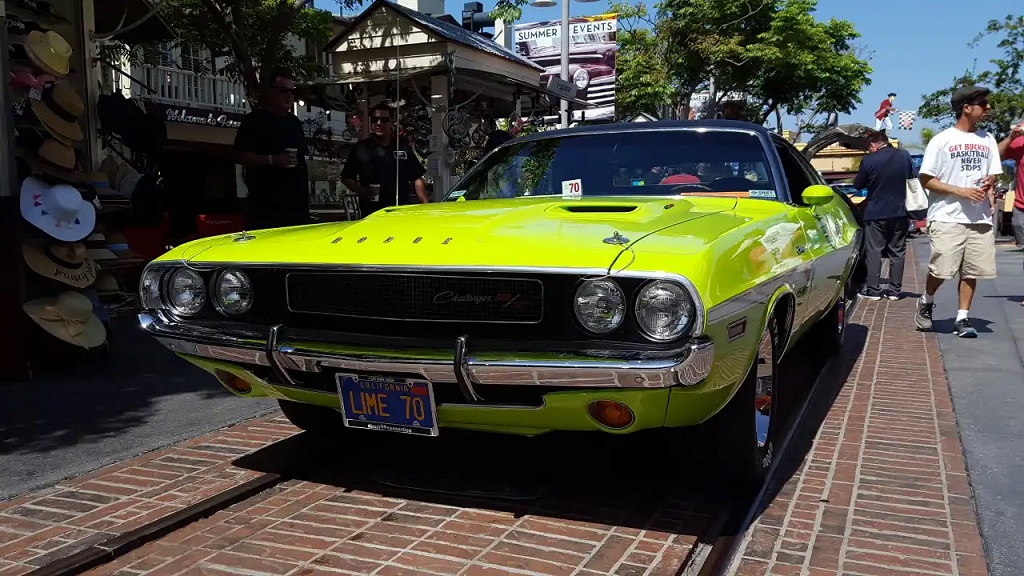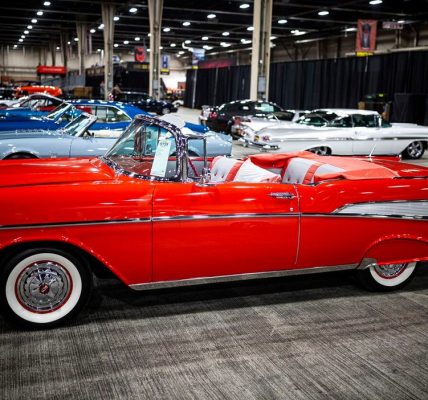The allure of classic and vintage cars is undeniable. From the sleek curves of a bygone era to the robust engineering that stood the test of time, these automobiles hold a special place in our hearts. But years can take a toll, leaving even the most cherished car faded, rusty, and potentially undrivable. This is where restoration and renewal come in – a chance to breathe new life into your classic and create a masterpiece that blends history with modern functionality.
However, embarking on a restoration project requires careful planning, dedication, and a good understanding of the process. This guide delves into the essential steps to take, considerations to make, and valuable tips to ensure your classic car gets the renewal it deserves.
Before You Begin: Setting the Stage for Success
- Know Your Car: Research the specific model you have. Familiarize yourself with its history, common trouble spots, and parts availability. Join online forums or car clubs to connect with enthusiasts who can offer valuable insights.
- Define Your Goals: Do you aim for a complete, concours-d’elegance quality restoration, or a driver-focused refresh that retains the car’s original character? Setting clear goals will guide your decisions throughout the project.
- Budgeting for Reality: Be honest with yourself about the financial commitment involved. Restoration costs can vary greatly depending on the car’s condition, the level of detail desired, and the amount of work you do yourself. Factor in parts, tools, professional services, and potential unforeseen issues.
- Workspace Considerations: Ideally, you’ll need a dedicated space to work on your car. A well-lit garage with good ventilation is optimal. If space is limited, consider alternative solutions like renting a storage unit temporarily.
The Restoration Journey: A Step-by-Step Guide
-
Disassembly and Inspection: This initial phase involves meticulously taking apart the car. It’s a great opportunity to thoroughly assess the condition of each component, create an inventory, and identify areas that need repair or replacement.
-
Addressing Rust and Corrosion: Rust is a classic car’s nemesis. Solutions may include sanding, applying a rust converter, replacing panels, or professional bodywork depending on the severity. Remember, proper rust treatment is crucial to ensure a long-lasting restoration.
-
Engine and Drivetrain Revival: The heart of your car needs special attention. Depending on the condition, an engine rebuild might be necessary. This could involve replacing worn parts, cleaning and rebuilding components, or even sourcing a replacement engine entirely.
-
Suspension and Steering Refresh: For a safe and enjoyable driving experience, the suspension and steering systems need to be in top shape. This might involve replacing worn bushings, shocks, and tie rods or rebuilding specific components.
-
Braking System Overhaul: Never compromise on safety. A complete overhaul of the braking system is essential. This includes replacing brake lines, pads, rotors/drums, and ensuring proper functionality of the master cylinder and calipers.
-
Electrical System Rejuvenation: The electrical system might require rewiring, replacing old components like the voltage regulator or starter motor, and ensuring proper functionality of lights and gauges.
-
Interior Restoration: Spruce up the interior to match the car’s renewed exterior. This could involve reupholstering seats, replacing carpets, restoring the dashboard, and refurbishing or replacing interior trim pieces.
-
Bringing Back the Shine: Paint and Detailing Once the car is reassembled, it’s time for the magic touch – a high-quality paint job that complements the car’s aesthetics. Detailing the interior and exterior will bring out the car’s true luster.
Restoration vs. Renewal: Choosing the Right Path
A full restoration aims to bring a car back to its original factory condition, preserving its historical significance. This is a meticulous and time-consuming process, often requiring sourcing rare parts and replicating original finishes.
Renewing a classic car focuses on improving its functionality and overall condition while retaining its vintage charm. This might involve replacing worn-out parts with modern equivalents for better performance and reliability, or customizing the car to your taste while staying true to its original design.
The choice between restoration and renewal depends on your goals and the car’s condition. Consider the historical significance of your car, its future value, and your personal preference for a museum-quality showpiece or a reliable driver.

Beyond the Basics: Valuable Tips for a Successful Project
- Document Everything: Take detailed pictures throughout the process. This will be invaluable for reassembly and future reference.
- Label Everything: Keep track of all the parts you remove by labeling them clearly. This will save you time and frustration during reassembly.
- Safety First: Invest in proper safety gear like gloves, goggles, and a respirator when working on the car, especially during tasks like sanding or using chemicals.
- Don’t Be Afraid to Ask for Help: Join car clubs, attend restoration workshops, or seek guidance from experienced mechanics for complex tasks. There’s a wealth of knowledge available in the classic car community.
- Source Parts Wisely: Look for reputable parts suppliers specializing in classic car parts. Online forums and car clubs can be valuable resources for finding rare or used parts.
- Embrace the Journey: Restoring a classic car is a rewarding but time-consuming process. Enjoy the learning experience, celebrate milestones, and don’t be discouraged by setbacks.
Related: How Old Are Vintage Cars
The Final Touches: Showcasing Your Restored Classic
Once your restoration or renewal is complete, it’s time to show off your hard work! Take high-quality pictures of your car, participate in car shows and club events, and share your story with fellow enthusiasts. Remember, the joy of classic car ownership extends beyond the finished product. It’s about the journey of bringing a piece of automotive history back to life and the sense of community that comes with being part of the classic car world.
Additional Considerations for the Savvy Restorer
- Matching Numbers: For some collectors, a car’s value increases if the engine and chassis numbers match the original vehicle identification number (VIN). If this is important to you, ensure these numbers remain intact during restoration.
- Documentation is Key: Maintain a detailed record of all the work done on your car, including parts used, receipts, and professional service invoices. This documentation will not only enhance the car’s value but also serve as a valuable resource for future maintenance and repairs.
- Modern Upgrades with a Vintage Touch: While staying true to the car’s original design, consider incorporating some tasteful modern upgrades to improve safety and drivability. For instance, you could install seatbelts (if not originally present), upgrade the lighting system for better visibility, or opt for modern tires with better handling characteristics.
By following these steps and keeping these considerations in mind, you can embark on a successful restoration or renewal journey for your classic car. Remember, it’s a process that requires dedication, patience, and a love for these timeless automotive icons. The result, however, will be a beautiful, functional piece of automotive history that you can cherish for years to come.





